-
 Bitcoin
Bitcoin $108,489.6704
1.13% -
 Ethereum
Ethereum $2,502.0528
2.92% -
 Tether USDt
Tether USDt $1.0002
0.00% -
 XRP
XRP $2.1941
0.51% -
 BNB
BNB $655.3375
1.00% -
 Solana
Solana $151.5977
1.27% -
 USDC
USDC $0.9999
0.00% -
 TRON
TRON $0.2768
0.32% -
 Dogecoin
Dogecoin $0.1676
2.86% -
 Cardano
Cardano $0.5675
0.98% -
 Hyperliquid
Hyperliquid $40.6109
7.48% -
 Bitcoin Cash
Bitcoin Cash $500.7746
2.09% -
 Sui
Sui $2.8328
2.03% -
 Chainlink
Chainlink $13.4452
1.26% -
 UNUS SED LEO
UNUS SED LEO $9.1623
0.39% -
 Avalanche
Avalanche $18.2267
2.24% -
 Stellar
Stellar $0.2382
0.00% -
 Toncoin
Toncoin $2.8885
1.68% -
 Shiba Inu
Shiba Inu $0.0...01159
0.91% -
 Litecoin
Litecoin $87.1827
0.88% -
 Hedera
Hedera $0.1511
2.90% -
 Monero
Monero $315.4992
-0.59% -
 Polkadot
Polkadot $3.4663
2.34% -
 Bitget Token
Bitget Token $4.6118
-0.65% -
 Dai
Dai $1.0000
-0.01% -
 Ethena USDe
Ethena USDe $1.0003
0.02% -
 Uniswap
Uniswap $7.2989
4.69% -
 Pepe
Pepe $0.0...01003
5.73% -
 Aave
Aave $275.5616
7.15% -
 Pi
Pi $0.5181
-2.49%
How to record ownership with NFT? On-chain confirmation of real estate/artworks
NFTs revolutionize real estate and art ownership by providing a secure, transparent way to record and transfer assets on the blockchain.
May 08, 2025 at 04:07 am
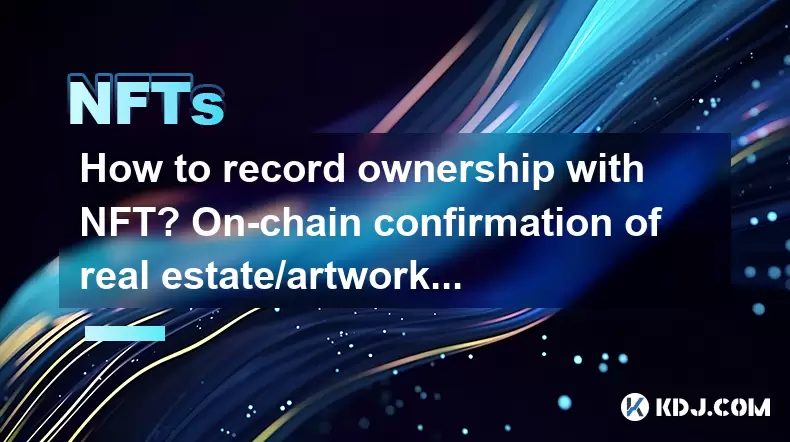
The integration of Non-Fungible Tokens (NFTs) into the realm of real estate and art ownership has opened up innovative ways to manage, transfer, and authenticate ownership. NFTs provide a unique digital representation of an asset on a blockchain, ensuring that each token is distinct and cannot be replicated. This technology is particularly appealing for recording ownership of tangible assets like real estate and artworks, as it offers a transparent and immutable record of ownership. In this article, we will explore how to use NFTs to record ownership and confirm the authenticity of real estate and artworks on the blockchain.
Understanding NFTs and Blockchain Technology
Before diving into the specifics of recording ownership, it's essential to understand the underlying technologies. NFTs are tokens on a blockchain that represent ownership of a unique item or piece of content. Each NFT contains distinguishing information that makes it different from other tokens. The blockchain is a distributed ledger that records all transactions across a network of computers, making it virtually impossible to alter or falsify records. This makes blockchain an ideal platform for recording and verifying the ownership of valuable assets.
Creating an NFT for Real Estate or Artworks
To record ownership of real estate or artworks using NFTs, you first need to create the NFT itself. This process involves several steps:
- Choose a Blockchain Platform: Popular platforms for creating NFTs include Ethereum, Binance Smart Chain, and Flow. Each has its own set of tools and smart contract standards, such as ERC-721 for Ethereum.
- Select an NFT Marketplace: Platforms like OpenSea, Rarible, or SuperRare allow you to mint and list your NFTs. Each platform has its own fees and requirements.
- Prepare Your Asset Data: For real estate, you might need to include property details, legal documents, and images. For artworks, you would include the artist's information, the artwork's title, and a high-quality image.
- Mint the NFT: Use the chosen marketplace's tools to upload your asset data and mint the NFT. This process typically involves paying a gas fee, which varies based on the blockchain's current network congestion.
- List the NFT: Once minted, list your NFT on the marketplace with a description and any additional information that might be relevant to potential buyers or owners.
Verifying Ownership Through On-Chain Records
Once the NFT is created and listed, the blockchain serves as an immutable record of ownership. On-chain confirmation means that the ownership details are stored directly on the blockchain, making them verifiable by anyone with access to the blockchain. To verify ownership:
- Access the Blockchain Explorer: Use a blockchain explorer like Etherscan for Ethereum to view the transaction history and current owner of the NFT.
- Check the NFT's Smart Contract: The smart contract associated with the NFT will contain the ownership details. You can access this information through the blockchain explorer or the NFT marketplace.
- Review Transaction History: The blockchain's transaction history will show all transfers of the NFT, providing a clear record of ownership changes over time.
Transferring Ownership with NFTs
Transferring ownership of real estate or artworks using NFTs is straightforward and secure. Here’s how it works:
- Initiate the Transfer: The current owner initiates the transfer by sending the NFT to the new owner's wallet address. This is typically done through the NFT marketplace or a compatible wallet application.
- Confirm the Transaction: Both parties must confirm the transaction, which may involve signing the transaction with their private keys.
- Record the Transfer on the Blockchain: Once confirmed, the transfer is recorded on the blockchain, updating the NFT's ownership details. This process is immediate and irreversible, providing a secure and transparent transfer of ownership.
Legal and Practical Considerations
While NFTs offer a revolutionary way to record and transfer ownership, there are legal and practical considerations to keep in mind:
- Legal Recognition: The legal status of NFTs as proof of ownership can vary by jurisdiction. It's essential to consult with legal professionals to ensure that using NFTs complies with local laws and regulations.
- Physical Asset Management: For real estate and physical artworks, the NFT represents ownership, but the physical asset still needs to be managed and maintained separately. This includes property taxes, maintenance, and insurance for real estate, and storage and preservation for artworks.
- Interoperability: As different blockchains and NFT standards evolve, ensuring that your NFT can be recognized and transferred across different platforms is crucial for long-term viability.
Enhancing Trust and Transparency
The use of NFTs for recording ownership of real estate and artworks enhances trust and transparency in several ways:
- Immutable Records: The blockchain's immutability ensures that once an NFT is created and ownership is recorded, it cannot be altered or deleted, providing a permanent record of ownership.
- Public Accessibility: Anyone can access the blockchain to verify ownership, reducing the risk of fraud and increasing trust in the ownership records.
- Smart Contract Automation: Smart contracts can automate certain aspects of ownership, such as royalty payments for artworks or automatic updates to property records, further enhancing transparency and efficiency.
Frequently Asked Questions
Q: Can NFTs be used to represent fractional ownership of real estate or artworks?
A: Yes, NFTs can be designed to represent fractional ownership. This is achieved by creating multiple NFTs that together represent the full ownership of an asset. Each NFT would represent a specific percentage of ownership, allowing multiple parties to own a share of the asset.
Q: What happens if the blockchain platform supporting the NFT goes out of business?
A: The blockchain itself is decentralized and not controlled by any single entity, so it would continue to function even if a specific platform goes out of business. However, you might need to migrate your NFT to another platform or use a different interface to access and manage your NFT.
Q: Are there any privacy concerns with using NFTs for real estate and artworks?
A: While the blockchain provides transparency, it also means that ownership records are publicly accessible. For those concerned about privacy, it's possible to use privacy-focused blockchains or additional layers of encryption to protect sensitive information. However, this must be balanced against the need for transparency and verifiability.
Q: How can I ensure the long-term preservation of an NFT representing a physical artwork?
A: To ensure the long-term preservation of an NFT, you should store the NFT in a secure digital wallet and keep backups of the associated metadata and images. Additionally, consider using decentralized storage solutions like IPFS to store the artwork's digital representation, ensuring it remains accessible even if centralized servers fail.
Disclaimer:info@kdj.com
The information provided is not trading advice. kdj.com does not assume any responsibility for any investments made based on the information provided in this article. Cryptocurrencies are highly volatile and it is highly recommended that you invest with caution after thorough research!
If you believe that the content used on this website infringes your copyright, please contact us immediately (info@kdj.com) and we will delete it promptly.
- Wintermute, Bitcoin Lending, and Cantor Fitzgerald: A New Chapter?
- 2025-06-30 16:30:12
- Polkadot: From Ethereum Killer to Ghost Chain? The Crypto Fading Phenomenon
- 2025-06-30 16:50:12
- Bitget Lists NodeOps (NODE) for Spot Trading: A New Era for DePIN?
- 2025-06-30 16:30:12
- Warren Buffett, Bitcoin, and the Oracle of Omaha's Evolving Views
- 2025-06-30 16:35:12
- Blockchain, Bitcoin, and Holdings: Navigating the Crypto Landscape in Style
- 2025-06-30 17:10:11
- PEPE Price Breakout Watch: Will the Frog Leap or Flop?
- 2025-06-30 17:10:11
Related knowledge
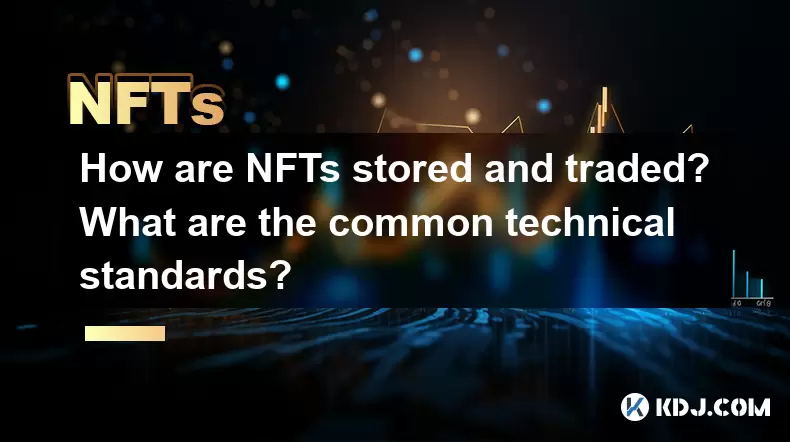
How are NFTs stored and traded? What are the common technical standards?
Jun 20,2025 at 08:49am
Understanding NFT Storage MechanismsNon-Fungible Tokens (NFTs) are digital assets that represent ownership of a unique item or piece of content, such as art, music, videos, or virtual real estate. The way NFTs are stored is crucial to their security and accessibility. Most NFTs are built on blockchain platforms like Ethereum, and the actual file—such as...
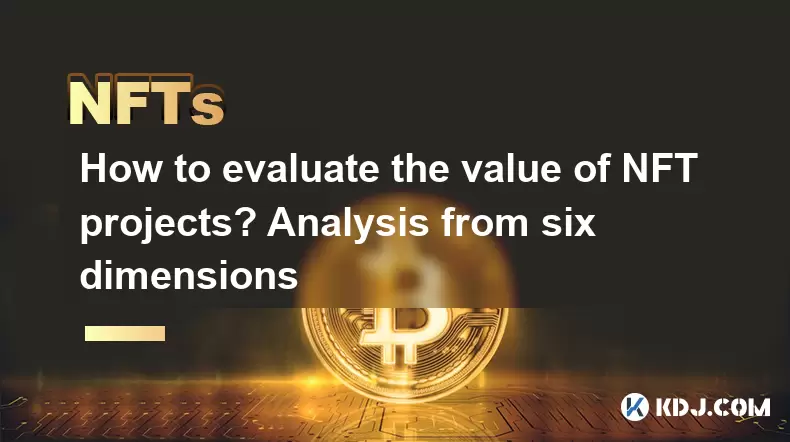
How to evaluate the value of NFT projects? Analysis from six dimensions
Jun 21,2025 at 02:28pm
1. Project Background and Team CredibilityEvaluating the value of NFT projects begins with a thorough understanding of its background and team composition. A credible project is usually backed by experienced developers, designers, and marketers who have a proven track record in blockchain or digital art industries. The presence of identifiable team memb...

What is the difference between NFT and digital collectibles? A must-read guide for beginners
Jun 19,2025 at 09:42pm
Understanding the Basics of NFTsNFTs, or Non-Fungible Tokens, are unique digital assets that represent ownership of a specific item or piece of content on the blockchain. Unlike cryptocurrencies such as Bitcoin or Ethereum, which are fungible and can be exchanged one-for-one, each NFT has distinct properties and cannot be directly replaced by another to...
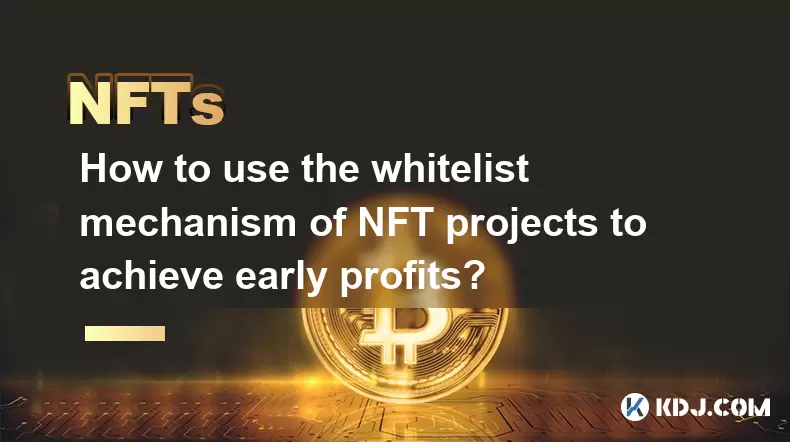
How to use the whitelist mechanism of NFT projects to achieve early profits?
Jun 21,2025 at 03:49am
Understanding the Whitelist Mechanism in NFT ProjectsThe whitelist mechanism is a popular strategy used by NFT project developers to allocate early access or exclusive minting rights to a select group of users. This system allows participants on the whitelist to mint NFTs before they are released to the general public, often at lower prices and with few...
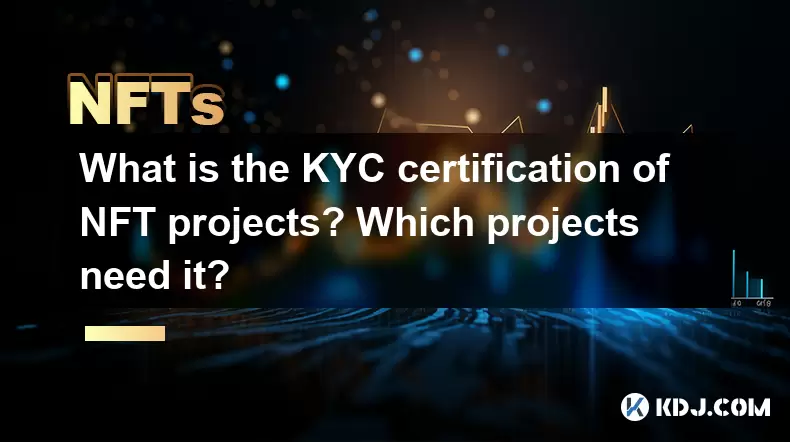
What is the KYC certification of NFT projects? Which projects need it?
Jun 21,2025 at 03:08pm
Understanding KYC Certification in the NFT SpaceKYC, or Know Your Customer, is a regulatory process used by businesses to verify the identity of their clients. In the context of NFT projects, KYC certification refers to the verification of user identities before they can participate in minting, trading, or selling NFTs on a platform. This practice is in...
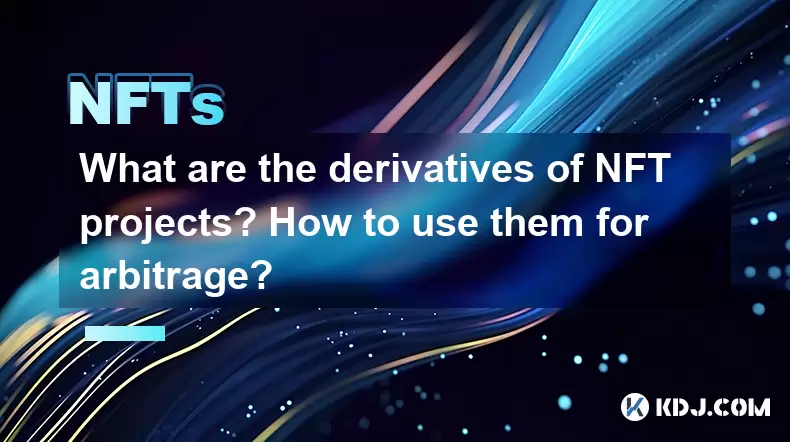
What are the derivatives of NFT projects? How to use them for arbitrage?
Jun 20,2025 at 06:14am
Understanding the Derivatives of NFT ProjectsNFTs, or non-fungible tokens, have evolved beyond simple digital collectibles. In recent years, derivatives of NFT projects have emerged as a new financial layer within the blockchain ecosystem. These derivatives are essentially financial instruments derived from the value and performance of underlying NFT as...

How are NFTs stored and traded? What are the common technical standards?
Jun 20,2025 at 08:49am
Understanding NFT Storage MechanismsNon-Fungible Tokens (NFTs) are digital assets that represent ownership of a unique item or piece of content, such as art, music, videos, or virtual real estate. The way NFTs are stored is crucial to their security and accessibility. Most NFTs are built on blockchain platforms like Ethereum, and the actual file—such as...

How to evaluate the value of NFT projects? Analysis from six dimensions
Jun 21,2025 at 02:28pm
1. Project Background and Team CredibilityEvaluating the value of NFT projects begins with a thorough understanding of its background and team composition. A credible project is usually backed by experienced developers, designers, and marketers who have a proven track record in blockchain or digital art industries. The presence of identifiable team memb...

What is the difference between NFT and digital collectibles? A must-read guide for beginners
Jun 19,2025 at 09:42pm
Understanding the Basics of NFTsNFTs, or Non-Fungible Tokens, are unique digital assets that represent ownership of a specific item or piece of content on the blockchain. Unlike cryptocurrencies such as Bitcoin or Ethereum, which are fungible and can be exchanged one-for-one, each NFT has distinct properties and cannot be directly replaced by another to...

How to use the whitelist mechanism of NFT projects to achieve early profits?
Jun 21,2025 at 03:49am
Understanding the Whitelist Mechanism in NFT ProjectsThe whitelist mechanism is a popular strategy used by NFT project developers to allocate early access or exclusive minting rights to a select group of users. This system allows participants on the whitelist to mint NFTs before they are released to the general public, often at lower prices and with few...

What is the KYC certification of NFT projects? Which projects need it?
Jun 21,2025 at 03:08pm
Understanding KYC Certification in the NFT SpaceKYC, or Know Your Customer, is a regulatory process used by businesses to verify the identity of their clients. In the context of NFT projects, KYC certification refers to the verification of user identities before they can participate in minting, trading, or selling NFTs on a platform. This practice is in...

What are the derivatives of NFT projects? How to use them for arbitrage?
Jun 20,2025 at 06:14am
Understanding the Derivatives of NFT ProjectsNFTs, or non-fungible tokens, have evolved beyond simple digital collectibles. In recent years, derivatives of NFT projects have emerged as a new financial layer within the blockchain ecosystem. These derivatives are essentially financial instruments derived from the value and performance of underlying NFT as...
See all articles

























































































